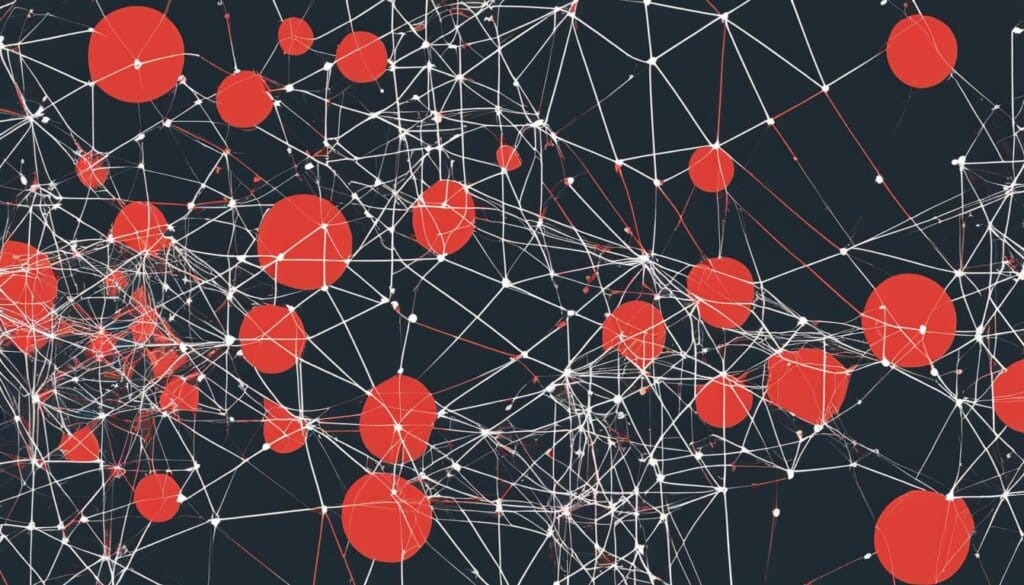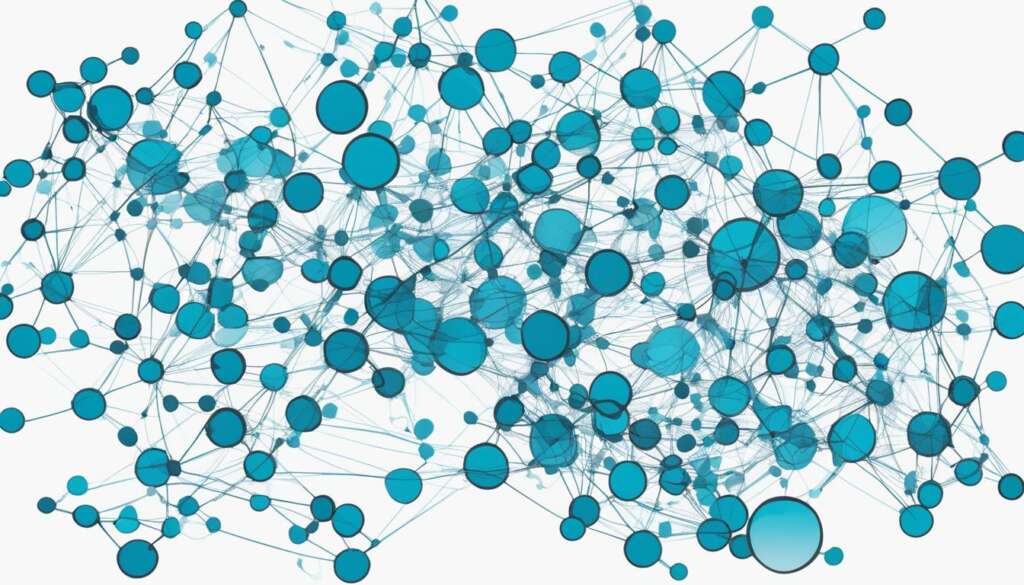Table of Contents
A schema is a mental structure that helps us organise knowledge and understand how things work. It acts as a framework in our brain, allowing us to connect new information to existing knowledge. Experts utilise schemas to organise sets of ideas by seeing connections between separate pieces of information. In mathematics, individuals who make these connections tend to perform better.
Deep learning involves organising knowledge into a larger schema, which can enhance understanding. Students can physically build and manipulate schemas using tools like index cards or Post-it notes to reinforce their comprehension.
The Development of Schemas
Schemas, or mental structures, are not static entities but rather evolve and transform over time. The formation of schemas is shaped by diverse factors, including personal experiences, cultural context, and social interactions. It is through these interactions that individuals acquire and refine their mental frameworks, facilitating cognitive development.
Research has consistently highlighted the pivotal role of schemas in various cognitive processes, particularly in memory. Encoding, storage, and retrieval of information are greatly influenced by the schemas we construct. These mental frameworks provide a cognitive roadmap, allowing us to organize and interpret new information effectively.
Dual Coding, a theory proposed by Paivio, emphasizes the benefits of combining verbal and visual information in facilitating schema formation. By presenting information in multiple modalities, learners can more easily grasp complex concepts and establish meaningful connections within their mental structures.
Furthermore, schemas alleviate cognitive load by enabling learners to process a limited amount of information at a time. When confronted with vast amounts of information, our cognitive resources can become overwhelmed. However, by leveraging our existing mental frameworks, we can streamline the learning process and improve comprehension.
“Schemas, as cognitive structures, provide us with a lens through which we view and make sense of our surrounding world.”
A deeper grasp of schema formation and the dynamic nature of mental frameworks can revolutionize the way we approach teaching and learning, enhancing educational outcomes.
The Impact of Schema Formation on Cognitive Development
The development of schemas significantly contributes to cognitive development, allowing learners to make sense of and navigate the world around them. By continuously forming, adapting, and refining their mental structures, individuals expand their cognitive capacities and acquire a more comprehensive understanding of the topics they encounter.
As depicted in the image above, schema formation occurs as individuals actively engage with new information, assimilating it into their existing mental frameworks. This continuous process of knowledge integration fosters cognitive growth and enhances learning outcomes.
The Role of Schemas in Perception and Understanding
Schemas play a crucial role in shaping how we perceive and understand the world around us. Acting as cognitive frameworks, they guide our interpretation of new information and experiences, allowing us to make sense of the complex stimuli we encounter.
One aspect influenced by schemas is our perception of shape and form. Our existing mental structures shape how we perceive and categorize objects, influencing our visual interpretation. For example, if we have a schema for a particular animal, such as a dog, we are more likely to recognize and interpret objects that resemble that schema as dogs. This process highlights the impact schemas have on our shape perception.
Schemas not only influence our perceptions but also affect how we interpret information. They act as filters through which we process new data, allowing us to make connections and create meaning. However, schemas can also lead to confirmation bias, where we selectively attend to information that aligns with our pre-existing beliefs, reinforcing our existing schemas.
“Schemas provide cognitive frameworks that guide our understanding of new information and experiences.”
In addition, schemas play a significant role in social cognition and interactions. They help us understand and predict others’ behaviors based on our preconceived notions and expectations. Schemas contribute to our ability to anticipate how someone might act in a given situation, enabling us to navigate social interactions more effectively.
However, schemas can also lead to biases and stereotypes. These automatic mental processes can result in oversimplified and generalized views of individuals or groups, leading to unfair judgments and discrimination. Recognizing and challenging our schemas is crucial to promoting open-mindedness and fostering accurate interpretations of others’ behaviors and intentions.
Challenging and Updating Schemas
Overcoming the limitations of schemas requires actively challenging and updating our cognitive frameworks. By exposing ourselves to diverse perspectives and new information, we can broaden our understanding of the world and break free from the constraints of biased thinking. Open-mindedness and critical thinking are essential in this process.
Challenging our schemas enables us to examine the validity of our beliefs and assumptions, helping us become more receptive to alternative viewpoints and interpretations. It promotes flexibility in our thinking and allows for a more accurate understanding of the complex and diverse world we inhabit.
Illustrative Example
To illustrate the impact of schemas on perception and understanding, consider the following scenario:
Imagine someone with a well-established schema for scientists, which includes the stereotype that they are older men wearing lab coats and glasses. They encounter a young scientist, a woman, who does not fit their preconceived schema. However, their schema may cause them to initially underestimate or misunderstand her expertise due to the contradiction with their mental framework.
This example highlights the potential biases and limitations imposed by schemas. By recognizing and challenging the stereotype, we can develop a more accurate perception and understanding of the individuals we encounter.

Overall, schemas serve as powerful cognitive tools that shape our perception and understanding of the world. While they provide a sense of structure and organization, they can also lead to biases and distortions. By actively challenging and updating our schemas, we can promote open-mindedness, foster accurate interpretations, and enhance our overall cognitive abilities.
Schemas in Social Cognition and Interactions
Person schemas are specific types of schemas that organize information about individuals or categories of people. These schemas play a crucial role in social cognition and interactions by providing cognitive frameworks for understanding others.
By organizing and categorizing information about people, person schemas help us make sense of the social world and predict others’ behaviors. They allow us to form expectations about how individuals within a particular group may think, feel, or act in certain situations.
However, it is essential to recognize that relying too heavily on schemas can lead to biases and stereotyping. When we generalize information about a group of people based on limited knowledge or preconceived notions, we run the risk of oversimplifying and misjudging individuals. Stereotypes can perpetuate prejudice and discrimination, hindering genuine understanding and empathy.
“Our schemas can shape our perception of others and influence our behavior towards them. It is crucial to challenge and update our schemas to promote open-mindedness, reduce biases, and foster inclusive interactions.”
Research has shown that schemas can also have a significant impact on mental health. Individuals with depressive symptoms may develop negative self-schemas, perceiving themselves as unworthy, unlovable, or deficient in some way. These negative self-schemas contribute to low self-esteem, feelings of hopelessness, and can perpetuate a cycle of depression.
As educators, it is crucial to help students develop healthier schemas. By promoting open-mindedness, empathy, and critical thinking in the classroom, we can encourage students to question and challenge their preconceived notions. Creating an inclusive and respectful learning environment fosters positive schema development, preparing students for diverse social interactions beyond the classroom.
Promoting Healthy Schemas in Education
Teachers play a vital role in shaping students’ schemas and attitudes towards others. By incorporating inclusive teaching practices, educators can foster healthy schema development and promote positive social interactions. Here are some strategies:
- Encourage open-mindedness: Create opportunities for students to explore diverse perspectives, challenge stereotypes, and develop a broader understanding of different cultures, beliefs, and experiences.
- Foster empathy: Teach empathy as a skill by encouraging students to consider others’ perspectives, feelings, and experiences. Engage in discussions and role-playing activities that promote understanding and empathy.
- Promote critical thinking: Teach students to question their assumptions and evaluate the accuracy of their schemas. Encourage them to seek evidence, consider multiple viewpoints, and be open to revising their schemas when new information emerges.
Promoting healthy schemas in education not only helps students develop a more accurate understanding of others but also cultivates respect, empathy, and inclusivity in society.
| Impact of Person Schemas | Positive Effects | Negative Effects |
|---|---|---|
| Development of social cognition | Enhanced understanding of others | Stereotyping and prejudice |
| Self-perception | Positive self-identity | Negative self-schemas |
| Social interactions | Improved empathy and relationships | Biases and discrimination |
Schema Theory and Learning
Schema theory is a fundamental concept for understanding how students learn and process information. It refers to the mental structures or frameworks that individuals use to organize and integrate knowledge and experiences. By leveraging schema theory, educators can design instructional materials and strategies that enhance learning outcomes and promote effective knowledge integration.
Students who possess prior knowledge in a specific domain have pre-existing schemas that can serve as a foundation for integrating and organizing new information. This prior knowledge allows them to make connections and relate new concepts to their existing schema, enabling a deeper understanding of the subject matter. Effective learning occurs when learners actively engage with instructional materials that activate and build upon their existing schemas.
Educators can employ various techniques to facilitate schema development and integration. Analogies and real-life examples provide concrete connections that bridge new information to existing schemas, enhancing comprehension and retention. Problem-based learning approaches encourage students to apply their schema to solve complex problems, promoting critical thinking and deeper understanding.
The Benefits of Schema-Driven Learning
Schema-driven learning has several benefits for students:
- Efficient Learning: By accessing prior knowledge, students can rapidly assimilate and integrate new information into their existing schemas. This leads to more efficient learning and retention.
- Meaningful Learning: Connecting new concepts to existing knowledge enhances the meaningfulness of the learning experience. Students find relevance and value in what they are learning.
- Transfer of Knowledge: Well-developed schemas facilitate the transfer of knowledge to new contexts and situations. Students can apply their understanding in various real-life scenarios.
By capitalizing on schemas, educators can optimize teaching strategies and foster meaningful learning experiences. The use of instructional materials that activate prior knowledge, such as engaging visuals, practical examples, and interactive activities, can elicit schema activation and facilitate knowledge integration.
Schema theory emphasizes the importance of building upon students’ existing knowledge to promote effective learning. By connecting new information to pre-existing schemas, educators can create a bridge between prior knowledge and new concepts, facilitating deeper understanding and knowledge integration.
| Effective Learning Strategies for Schema Development | Benefits |
|---|---|
| Utilizing analogies and real-life examples | Enhances comprehension and application of new concepts |
| Implementing problem-based learning approaches | Promotes critical thinking and problem-solving skills |
| Providing visual aids and interactive activities | Activates schemas and aids in knowledge integration |
By employing these effective learning strategies, educators can effectively leverage schema theory to enhance the teaching and learning process, ultimately leading to improved academic performance and a deeper understanding of the subject matter.
The Dynamic Nature of Schemas
Schemas are dynamic and evolving structures that adapt to new information and experiences. As individuals interact with their environment, schemas grow and change, enabling us to make sense of the world around us.
However, it is important to recognize that schemas can also become rigid and resistant to change, particularly as people grow older. People tend to hold onto their existing schemas, even in the face of contradictory evidence, as challenging and updating them can be a cognitive effort.
Nevertheless, expanding cognitive frameworks and promoting flexible thinking require us to embrace the dynamic nature of schemas and be open to adapting them to new information and experiences. This allows us to form more accurate and comprehensive mental representations of the world.
Embracing Change and Expanding Perspectives
Challenging and updating schemas is essential for expanding cognitive frameworks. By actively seeking out and integrating new information, we can refine and broaden our understanding of various subjects. Adapting schemas based on new insights and perspectives enables us to build more intricate mental structures.
“The mind is like a parachute; it only works when it’s open.” – Frank Zappa
Adapting schemas also helps us to overcome cognitive biases that may hinder our thinking and understanding. By actively questioning and examining our pre-existing schemas, we can avoid falling into the trap of confirmation bias or relying on stereotypes.
Expanding our cognitive frameworks allows us to approach situations with an open mind, encouraging critical thinking, and facilitating more effective problem-solving. It promotes a growth mindset and fosters intellectual curiosity.
| Benefits of Adapting Schemas | Challenges in Adapting Schemas |
|---|---|
|
|
How Schemas Impact Perception and Behavior
Schemas, the cognitive frameworks we develop, have a significant impact on our perception and behavior. They shape the way we interpret the world and guide our understanding of new information and experiences. However, schemas can also lead to cognitive biases and distortions, influencing our beliefs and judgments.
One prominent example of a cognitive bias influenced by schemas is confirmation bias. This bias causes individuals to selectively attend to information that confirms their pre-existing beliefs, while disregarding contradictory evidence. Confirmation bias is a result of our schemas filtering incoming information to fit our existing mental structures, making it challenging to change our beliefs even in the face of opposing facts.
Social schemas, such as stereotypes, also play a role in impacting behavior and judgments about others. Stereotypes are generalized beliefs or assumptions about a particular group of people based on their shared characteristics. These schemas can lead to biased behaviors and perceptions, as individuals may rely on stereotypes to make quick judgments without considering individual differences.
Schemas simplify the world and enable quick thinking, but they can also distort incoming information and hinder accurate understanding.
For instance, if someone holds a stereotype that people from a certain background are inherently lazy, they may overlook individual effort and accomplishments that contradict this schema. This can lead to unfair judgments and discriminatory behaviors that perpetuate stereotypes and hinder social inclusivity.
It is important to recognize that schemas are not always accurate representations of reality. They are mental shortcuts that allow for efficient cognitive processing but can lead to cognitive biases and misinterpretations. Challenging and updating our schemas is essential for promoting open-mindedness, reducing biases, and facilitating more accurate perceptions and behaviors.
Readers must critically evaluate their own schemas and strive to develop a more nuanced and empathetic understanding of the world.
The Impact of Schemas on Learning
Schemas not only influence perception and behavior but also have implications for learning. When schemas prevent new information from being accurately processed, they can hinder the acquisition of knowledge and impede learning.
For example, if a student has a well-established schema about a particular scientific concept that is incorrect or incomplete, it can be challenging for them to understand and internalize new information that contradicts their existing schema. This resistance to updating cognitive frameworks can hinder the development of accurate knowledge and conceptual understanding.
Therefore, educators and learners need to be aware of the potential impact of schemas on learning processes. By promoting active engagement, critical thinking, and open-mindedness, educators can help students challenge and revise their schemas to facilitate more effective learning and knowledge integration.
Applying Schema Theory in Education
Schema theory offers valuable insights for educators, enabling them to design instructional strategies that optimize learning in the classroom.
By understanding how learners construct and refine schemas, teachers can build upon students’ pre-existing schemas, facilitating meaningful learning experiences. Activating prior knowledge, using real-life examples, and encouraging problem-solving can effectively enhance schema development.
Moreover, teachers can play a vital role in promoting healthy schema development. Challenging stereotypes and biases, along with cultivating critical thinking skills, can help students develop more accurate and open-minded schemas.
Applying schema theory in education has the potential to revolutionize teaching strategies and foster optimal learning outcomes, enabling students to thrive in their educational journey.
FAQ
What is a schema and how does it help us organize knowledge?
A schema is a mental structure that allows us to understand how things work and organize our knowledge. It helps us connect new information to existing knowledge, forming a structure in the brain.
How are schemas formed and how do they change over time?
Schemas develop and change over time through personal experiences, cultural context, and social interactions. They are influenced by new information and adapt to the environment.
What role do schemas play in perception and understanding?
Schemas shape how we perceive and interpret the world. They provide cognitive frameworks that guide our understanding of new information and experiences.
How do schemas influence social cognition and interactions?
Schemas, particularly person schemas, influence social cognition and interactions by providing frameworks for understanding others. However, relying too much on schemas can lead to biases and stereotyping.
How does schema theory relate to learning?
Schema theory is crucial in understanding how students learn and process information. Students with prior knowledge can integrate and organize new information more effectively. Educators can use schema theory to design instructional materials that build upon students’ existing knowledge.
Do schemas change over time?
Yes, schemas are dynamic and evolving structures that adapt to new information and experiences. However, they can also become rigid and resistant to change, particularly as people grow older.
How do schemas impact perception and behavior?
Schemas can significantly impact perception and behavior. Confirmation bias, influenced by schemas, leads people to selectively attend to information that confirms their pre-existing beliefs. Schemas can also lead to stereotypes and distort incoming information to fit existing frameworks.
How can schema theory be applied in education?
Understanding how learners construct and refine schemas can help educators design instructional strategies that optimize learning. By activating prior knowledge, using real-life examples, and promoting critical thinking, educators can enhance schema development and foster meaningful learning experiences.












